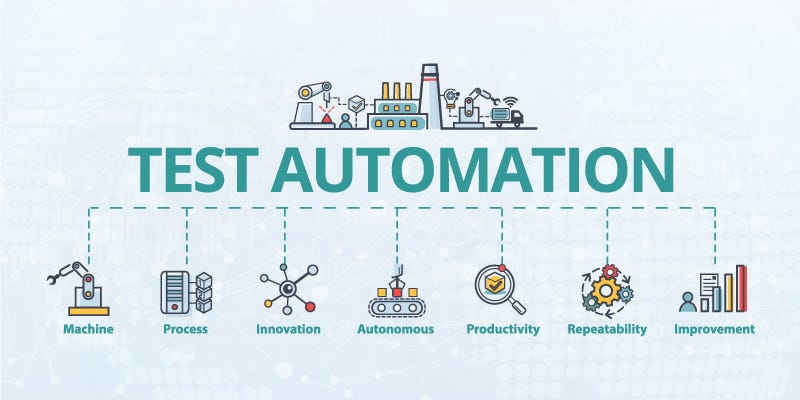The Best Guide to Implementing Automation Testing Effectively
The Best Guide to Implementing Automation Testing Effectively
Blog Article
From Handbook to Automated Testing: A Comprehensive Guide to Transitioning Smoothly and Successfully
In the realm of software screening, the shift from guidebook to automated procedures has come to be a progressively crucial shift for organizations looking for to boost effectiveness and accuracy in their screening methods. The journey from guidebook to automated screening is not without its challenges, yet when approached strategically and with a clear strategy in mind, the benefits can be substantial.
Advantages of Automated Checking
Automated testing offers countless advantages, enhancing performance and precision in software application advancement processes. One primary benefit is the substantial reduction in screening time. Automated tests can be run concurrently on multiple gadgets and running systems, dramatically quickening the testing phase contrasted to manual testing. This boosted efficiency enables faster responses on the quality of the software program, enabling designers to recognize and address issues without delay.
Furthermore, automated testing makes certain a greater level of precision in identifying issues. Consistency in testing is additionally enhanced, as automated tests implement the very same steps precisely each time they are run.
Picking the Right Tools

First of all, analyze your objectives and requirements. Comprehend the range of your job, the modern technologies involved, and the ability of your group. This analysis will aid you determine the functions and abilities you call for in your screening tools.
Secondly, consider the compatibility of the tools with your existing systems and processes. Seamless combination with your present software application advancement lifecycle is important to make sure a smooth change to automation.
In addition, evaluate the scalability and flexibility of the tools. As your testing requires develop, the tools must have the ability to adapt and accommodate changes effectively.
Last but not least, consider the assistance and area around the devices. When implementing automated screening, robust assistance and an active customer community can give important sources and help. By thoroughly considering these elements, you can pick the right tools that straighten with your requirements and established the stage for an effective transition to automated screening.
Creating Effective Examination Manuscripts

When crafting examination manuscripts, it is necessary to think about the details demands of the software being examined and make sure that the scripts attend to all crucial capabilities. Clear and descriptive naming conventions for examination manuscripts and test instances can enhance readability and maintainability. In addition, incorporating mistake handling devices within the test manuscripts can help in determining and addressing problems promptly.
Furthermore, organizing examination scripts right try this web-site into modular elements can boost reusability and scalability, decreasing redundancy and boosting efficiency in examination manuscript maintenance. Routine testimonials and updates to evaluate scripts are critical to keep rate with evolving software application needs and performances. By adhering to these concepts, testers can create durable and efficient test manuscripts that contribute substantially to the success of automated screening processes.
Integrating Automation Into Workflows
Effective assimilation of automation tools into existing process improves and streamlines processes efficiency within software program advancement cycles. When integrating automation right into workflows, it is vital to recognize recurring tasks that can be automated to save time and decrease human mistake. By effortlessly incorporating automated screening tools like Selenium or Appium right into the software development lifecycle, teams can accomplish faster comments on code modifications, causing quicker pest discovery and resolution. This assimilation permits continuous screening throughout the growth procedure, making certain that any kind of concerns are recognized at an early stage, leading to higher software application high quality. Additionally, automation can be used to set off tests automatically after each code commit, offering immediate validation and liberating testers to concentrate on more complex situations. Proper integration of automation tools calls for cooperation in between growth, screening, and procedures teams to develop a unified process that optimizes efficiency and performance in providing top quality software.
Making Sure a Smooth Transition
Effectively transitioning to automated testing entails careful preparation and cautious implementation to make best use of and reduce disruptions effectiveness in the software program advancement process - automation testing. To guarantee a smooth change, it is necessary to begin by conducting a thorough assessment of the existing testing processes and recognizing areas where automation can bring the most substantial benefits. Involving with all stakeholders beforehand in the process, consisting of programmers, testers, and task managers, is essential for amassing support and buy-in for the automation effort
Communication is crucial throughout this change phase. Clear communication of the goals, advantages, and assumptions of automated screening helps to handle any kind of resistance or problems that might occur. Furthermore, supplying appropriate training and sources for team participants to upskill in automation devices and methods is crucial for ensuring an effective change.

Conclusion
To conclude, transitioning from handbook to automated screening supplies numerous benefits, including boosted effectiveness and integrity. By picking the suitable tools, composing reliable test scripts, and integrating automation effortlessly right into workflows, organizations can make sure a smooth and effective transition. It is vital to welcome automation as a beneficial asset in software testing processes to enhance general top quality and performance.
In the realm of software testing, the shift from manual to automated processes has ended up being a significantly vital transition for organizations seeking to improve effectiveness and precision in their testing methods. Automated examinations can be run all at once on numerous devices and operating systems, get redirected here substantially speeding up the testing phase compared to manual testing. Consistency in testing is additionally improved, as automated learn this here now examinations carry out the exact same steps precisely each time they are run.To ensure the successful execution of chosen screening tools, the creation of effective examination manuscripts plays an important function in validating the functionality and efficiency of automated processes - automation testing. By following these concepts, testers can produce reliable and robust test manuscripts that add considerably to the success of automated screening procedures
Report this page